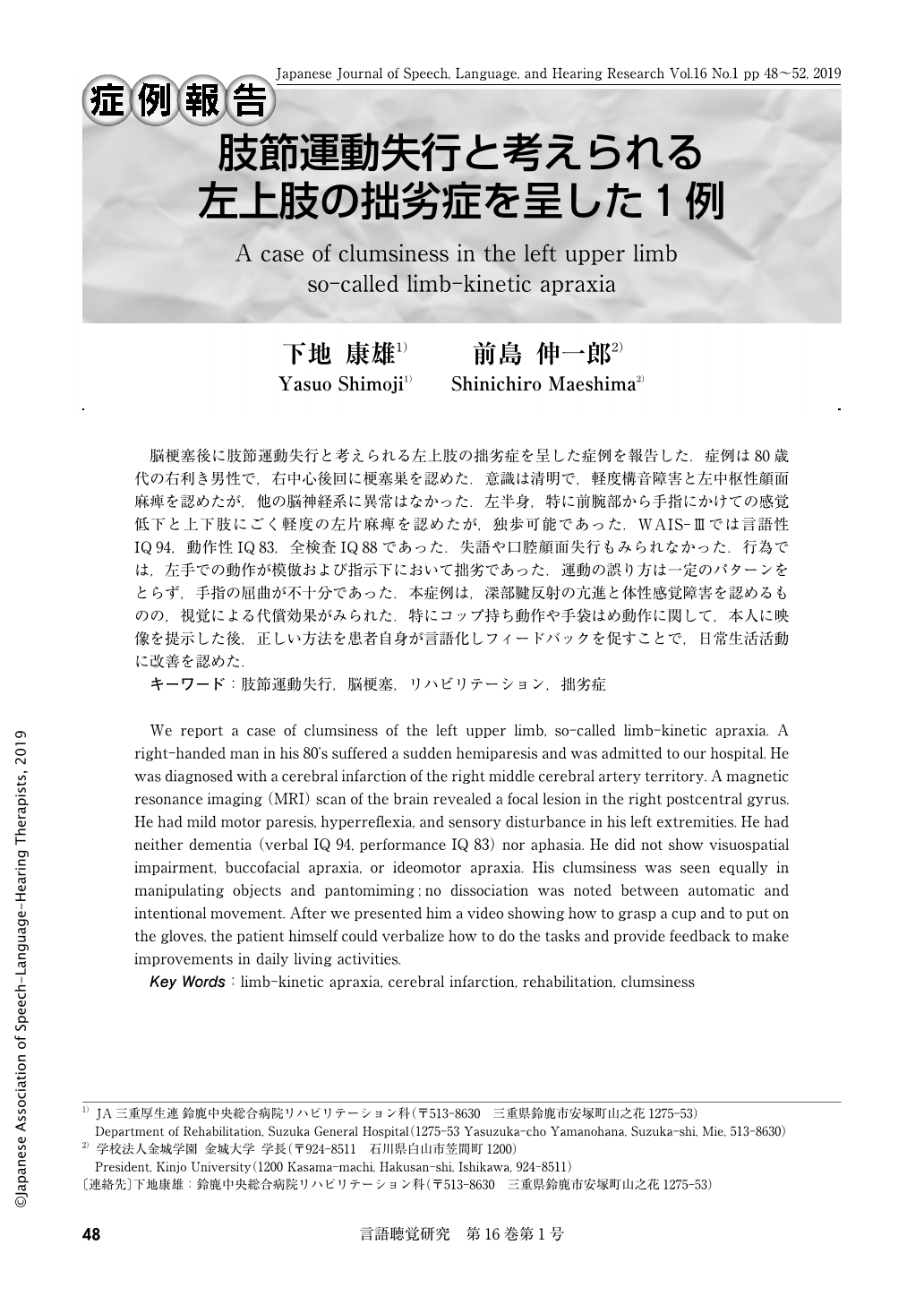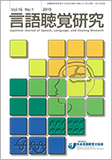Japanese
English
- 有料閲覧
- Abstract 文献概要
- 1ページ目 Look Inside
- 参考文献 Reference
脳梗塞後に肢節運動失行と考えられる左上肢の拙劣症を呈した症例を報告した.症例は80歳代の右利き男性で,右中心後回に梗塞巣を認めた.意識は清明で,軽度構音障害と左中枢性顔面麻痺を認めたが,他の脳神経系に異常はなかった.左半身,特に前腕部から手指にかけての感覚低下と上下肢にごく軽度の左片麻痺を認めたが,独歩可能であった.WAIS-Ⅲでは言語性IQ94,動作性IQ83,全検査IQ88であった.失語や口腔顔面失行もみられなかった.行為では,左手での動作が模倣および指示下において拙劣であった.運動の誤り方は一定のパターンをとらず,手指の屈曲が不十分であった.本症例は,深部腱反射の亢進と体性感覚障害を認めるものの,視覚による代償効果がみられた.特にコップ持ち動作や手袋はめ動作に関して,本人に映像を提示した後,正しい方法を患者自身が言語化しフィードバックを促すことで,日常生活活動に改善を認めた.
We report a case of clumsiness of the left upper limb, so-called limb-kinetic apraxia. A right-handed man in his 80's suffered a sudden hemiparesis and was admitted to our hospital. He was diagnosed with a cerebral infarction of the right middle cerebral artery territory. A magnetic resonance imaging (MRI) scan of the brain revealed a focal lesion in the right postcentral gyrus. He had mild motor paresis, hyperreflexia, and sensory disturbance in his left extremities. He had neither dementia (verbal IQ 94, performance IQ 83) nor aphasia. He did not show visuospatial impairment, buccofacial apraxia, or ideomotor apraxia. His clumsiness was seen equally in manipulating objects and pantomiming;no dissociation was noted between automatic and intentional movement. After we presented him a video showing how to grasp a cup and to put on the gloves, the patient himself could verbalize how to do the tasks and provide feedback to make improvements in daily living activities.

Copyright © 2019, Japanese Association of Speech-Language-Hearing Therapists. All rights reserved.


